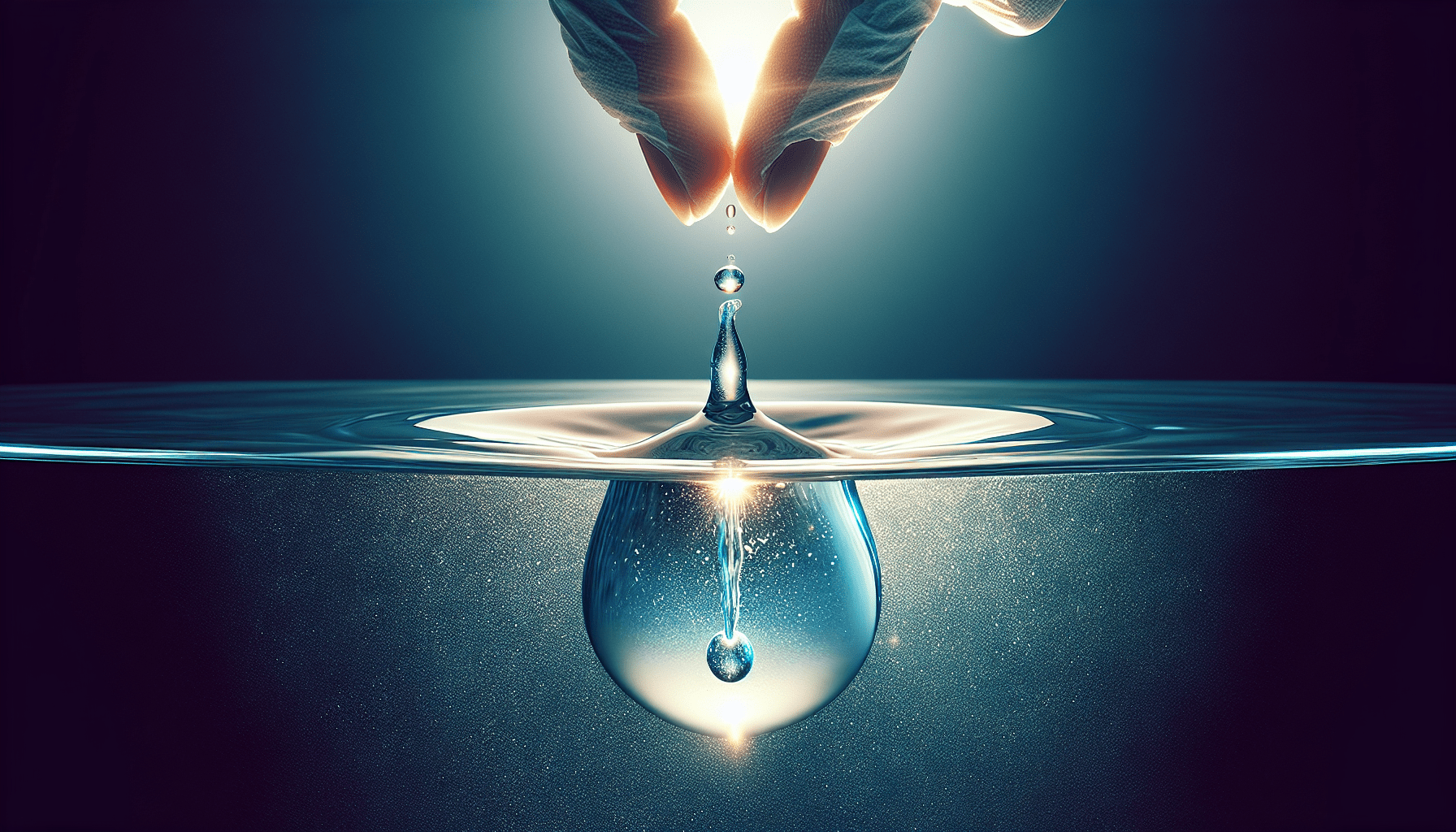Imagine you’ve just entered the world of fishkeeping and you’re eager to set up your very first aquarium. You’ve carefully chosen the tank, picked out the most beautiful tropical fish, and now you’re left with this burning question: How long do you let the water sit before introducing your colorful new aquatic friends? The answer to this seemingly simple question can play a crucial role in ensuring the well-being and longevity of your fish. In this article, we will explore the factors that determine how long you should let water sit before adding fish, and give you expert tips to help you create a thriving underwater haven for your finned companions.
Importance of Letting Water Sit
When it comes to setting up a new aquarium or performing water changes, you may have heard the phrase “letting water sit.” But what does it actually mean and why is it important? Let’s dive into the various reasons why letting water sit is crucial for the health and well-being of your fish.
Removal of Chlorine and Chloramine
Firstly, one of the primary reasons for letting water sit is to remove chlorine and chloramine from the water. These are commonly added to tap water as disinfectants, but they can be harmful to fish if not properly removed.
Explanation of Chlorine and Chloramine
Chlorine and chloramine are chemicals that are used to kill bacteria and other harmful organisms in water. Chlorine is more volatile and dissipates quickly, while chloramine is a more stable compound that remains in the water for a longer period of time. Both can be toxic to fish, causing irritation to their gills and potentially leading to respiratory problems.
Why They Are Harmful to Fish
Fish possess delicate respiratory systems, and the presence of chlorine and chloramine in their environment can be detrimental to their health. These chemicals can irritate their gills, making it difficult for them to breathe properly. Prolonged exposure to chlorine and chloramine can weaken their immune systems, making them more susceptible to diseases and infections.
Methods for Removing Chlorine and Chloramine
To remove chlorine, simply letting the water sit uncovered allows it to evaporate over time. However, this method is not as effective for removing chloramine. Water conditioners specifically designed to neutralize these chemicals should be used to ensure complete removal. These conditioners work by binding with chlorine and breaking down chloramine, rendering them harmless to fish.
Adjustment of Water Temperature
Apart from removing harmful chemicals, allowing water to sit also gives you the opportunity to adjust its temperature before introducing it to your fish tank. Proper water temperature is crucial for the overall well-being of your aquatic pets.
Significance of Proper Water Temperature
Maintaining the correct water temperature is essential as it directly affects the health and behavior of your fish. Sudden temperature fluctuations can cause stress, leading to weakened immune systems and increased susceptibility to diseases. By letting the water sit, you can ensure that its temperature matches the ideal range for your fish species.
Preventing Shock to Fish
Putting fish in water that is significantly different in temperature from their previous environment can cause shock and distress. This shock can lead to various health issues, including organ failure and even death. By allowing the water to sit until it reaches the desired temperature, you can prevent these adverse effects and create a smoother transition for your fish.
Methods for Adjusting Water Temperature
There are several ways to adjust the water temperature, depending on your specific needs. You can use a heater to warm the water or add ice packs or cool water to lower its temperature. Regardless of the method, it is crucial to let the water sit for some time after adjusting the temperature to ensure it stabilizes before introducing your fish.
Allowing Dissipation of Harmful Gases
Another important reason for letting water sit is to allow time for the dissipation of harmful gases. While water may appear clear and clean, it can contain substances that may be harmful to your fish if not allowed to dissipate properly.
Understanding Harmful Gases
Harmful gases such as ammonia and carbon dioxide can build up in water over time. Ammonia is a waste product of fish and other organisms, while carbon dioxide is a product of respiration. Both gases can be toxic to fish, leading to stress and poor health. Allowing the water to sit gives these gases the opportunity to escape, reducing the risk of harm to your fish.
Avoiding Negative Effects on Fish
Exposure to high levels of ammonia and carbon dioxide can have serious consequences for fish, including respiratory distress, sluggishness, and even death. By letting the water sit before adding fish, you provide a chance for these gases to disperse naturally, minimizing the potential harm to your aquatic friends.
Allowing Sufficient Time for Dissipation
The duration of time required for the dissipation of harmful gases can vary based on several factors. Factors such as the water source, quantity of water, presence of filtration systems, and climate and seasonal variations can all influence the time required. Let’s take a closer look at each of these factors.
Factors Affecting the Time Required
Water Source
The source of your water can significantly impact the waiting time. Different water sources have varying levels of chlorine, chloramine, and other impurities that need time to dissipate.
Tap Water
If you are using tap water, it generally contains higher levels of chlorine and chloramine. Waiting for at least 24 to 48 hours is recommended to allow these chemicals to fully evaporate. Using a water conditioner specifically designed to neutralize chlorine and chloramine can help expedite the process.
Well Water
Well water usually has fewer impurities compared to tap water. In most cases, letting the water sit for a shorter period, around 12 to 24 hours, is sufficient for chlorine and other gases to dissipate.
Rainwater
Rainwater is often considered the purest water source, as it does not contain added chemicals. Allowing rainwater to sit for a few hours is typically enough to ensure any pollutants from the atmosphere settle before usage.
Quantity of Water
The volume of water being treated also affects the waiting time. Smaller tanks or bowls require less time for the necessary adjustments, while larger aquariums and ponds may need more time for proper dissipation of harmful substances.
Small Tanks or Bowls
For small aquariums or bowls, letting the water sit for 12 to 24 hours is usually sufficient. However, ensuring proper filtration and maintaining regular water changes is essential, especially in smaller volumes of water.
Large Aquariums
Larger aquariums hold more water, which means it takes longer for the water to stabilize and for gases to dissipate. Waiting for 24 to 48 hours is generally recommended for large aquariums to ensure the water is safe for fish.
Ponds and Outdoor Water Bodies
Outdoor water bodies like ponds may require even longer waiting times, as they are more susceptible to environmental factors. Allowing the water to sit for a few days or even a week can help ensure the gases have dissipated and the water is safe for fish.
Presence of Filtration Systems
The presence of filtration systems in your aquarium or pond can impact the waiting time required. Filtration systems play a vital role in maintaining water quality and can help remove impurities more efficiently.
Types of Filtration Systems
Mechanical and chemical filtration systems are commonly used in aquariums and ponds. Mechanical filtration involves removing physical debris and particles from the water, while chemical filtration focuses on removing dissolved impurities such as ammonia and nitrites.
Impact on Water Quality
A properly functioning filtration system can significantly reduce the waiting time required. The constant circulation and filtering of water help remove impurities and promote a healthier environment for your fish. However, it is still important to let the water sit for some time to ensure complete dissipation of gases.
Climate and Seasonal Variations
The climate and seasonal variations in your area can influence the waiting time needed before introducing fish to the water. Temperature and humidity levels affect water quality and the dissipation of gases.
Temperature and Humidity
Warmer temperatures and higher humidity levels can accelerate the evaporation process, allowing chlorine and other gases to dissipate more quickly. In contrast, cooler temperatures and low humidity may prolong the sitting time required. It is important to take these factors into consideration when determining the waiting time for your water.
Effects on Water Quality
Climate and seasonal variations can contribute to changes in water quality. For example, during hot summer months, water sources may have higher chlorine levels due to increased usage. Understanding these fluctuations can help you determine how long you should let the water sit before adding fish.
Corresponding Adjustment Time
In addition to the dissipation of harmful gases, the adjustment time for water temperature may also be influenced by climate and seasonal variations. For instance, in colder climates, it may take longer for the water to reach the desired temperature, requiring additional waiting time.
Recommended Waiting Time
Considering the various factors discussed, it is important to establish general guidelines for the waiting time. While waiting for 24 to 48 hours is a commonly recommended timeframe, it is always wise to seek specific instructions from professionals or experienced aquarists.
General Guidelines
As a general guideline, allowing water to sit for at least 24 to 48 hours is advisable before introducing fish. This timeframe allows for the removal of chlorine and chloramine, adjustment of water temperature, and sufficient dissipation of harmful gases.
Specific Instructions from Professionals
Depending on your specific circumstances, such as water source, filtration system, and climate, it is always beneficial to consult with professionals or reputable sources for more accurate waiting time recommendations. Experts can provide valuable insights tailored to your unique requirements, ensuring the health and well-being of your fish.
Additional Considerations
While waiting for water to sit is important, it is equally crucial to perform regular water testing and maintenance to ensure optimal water quality for your fish. Monitoring parameters such as pH, ammonia, nitrites, and nitrates is essential in maintaining a healthy aquatic environment. Regular water changes, filter maintenance, and other routine tasks should be performed to support the well-being of your fish.
In conclusion, letting water sit before putting fish in is of paramount importance for their overall health and well-being. Through the removal of chlorine and chloramine, adjustment of water temperature, and dissipation of harmful gases, the waiting time allows for a smoother transition for your fish. Understanding the various factors that influence the waiting time, such as water source, quantity, filtration systems, climate, and seasonal variations, can help you establish the appropriate timeframe. By following general guidelines and seeking advice from professionals, you can ensure a safe and thriving aquatic environment for your fish. So, next time you set up a new aquarium or perform a water change, remember to give the water the time it needs to settle and provide the best home for your finned friends.

My name is James Gheen, and I am thrilled to welcome you to Tropical Fish Farmers, the ultimate destination for everything related to tropical fish breeding. As an avid underwater enthusiast, I am dedicated to sharing my knowledge and experience to help you successfully breed and care for tropical fish. Whether you’re a beginner starting your aquarium journey or a seasoned breeder looking to expand your knowledge, my website has something for everyone. Dive into our extensive library of articles, tutorials, and videos covering various topics to enhance your breeding success. Join me in our vibrant community and let’s contribute to responsible fish breeding and conservation efforts together. Discover Tropical Fish Farmers and become part of our global community today.

